Chart of the week: 77% of online minutes in the UK are spent on mobile, showing that mobile-optimized marketing really is a must
The amount of time people are spending online is on the rise, with most opting to access the web via mobile. The vast majority of individuals across the world are now spending most of their online time on a mobile device, with the ability to be always connected changing people’s browsing habits.
According to Comscore’s Global State of Mobile report, the total minutes spent online in from June 2017 to June 2019 increased by 43%, with Canada seeing a 34% rise during the same period. A large proportion of these extra minutes are spent on mobile, with it now being common to check your phone while out and about.

So, what does this mean for digital businesses and what do marketers need to bear in mind? We’ve taken a look at the full Comscore report to pull out some figures you need to know.
Most time online is spent on mobile
Looking at figures for various countries, around three-quarters of online time, on average is spent on mobile devices. The largest amount of time being spent on mobile devices is seen in Indonesia and India, with 91% of online minutes being spent on mobile. Brazil also sees a lot of mobile usage, with mobile accounting for 85% of online minutes.
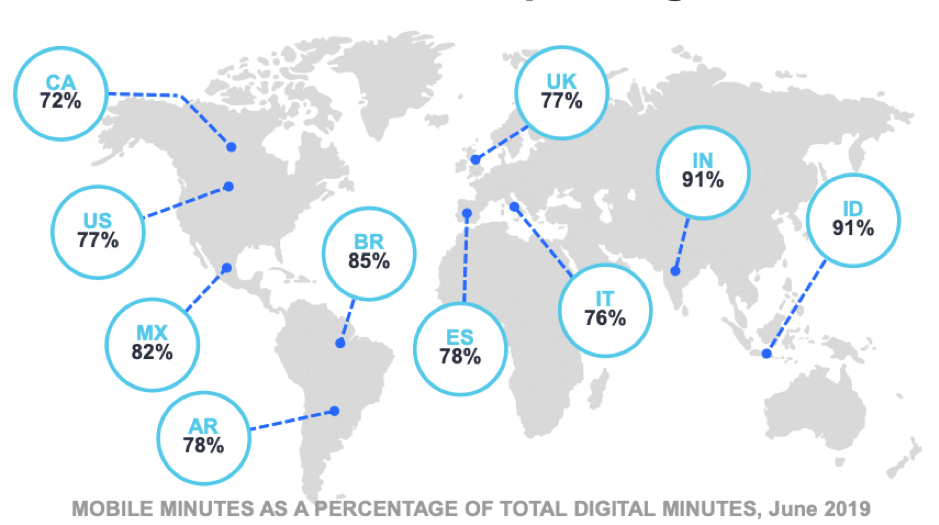
The UK and the US are always equal in the percentage of online minutes being spent on mobile devices, with both standing at 77%. While Canada reports the lowest use of mobile (72%), still well over half of people’s online time is being spent on mobile devices.
Ultimately, this means that marketers really do need to be thinking mobile-first and decisions should always come back to how does this looks on mobile. Improving your mobile marketing will ensure that your site and brand is better suited to the browsing habits of most online audiences.
Apps are the main drivers of online mobile minutes
With ease-of-use being a big plus point for mobile users, it is unsurprising that apps are driving the majority of online mobile minutes. In all markets, over 80% of mobile minutes are spent on apps.
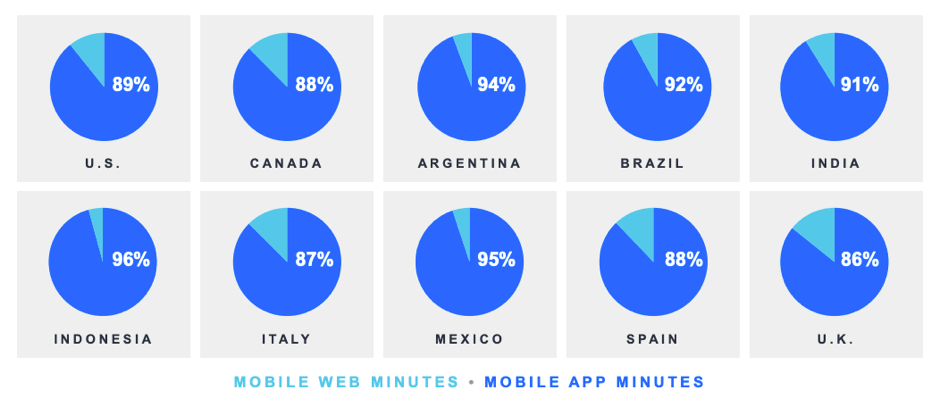
While mobile users are still spending some time on browsers, they are more likely to head to an app. This means that businesses could benefit from creating targeted apps that make it easier for users to shop, access content, find support, etc.
On top of this, many of the most popular apps - 88% - are social media. This shows that social media marketing is more important than ever. Even if you don’t have an app, optimizing your social media activity could help drive mobile traffic to your site – you just need to ensure that your site is suitable for mobile viewing in order to keep users there.
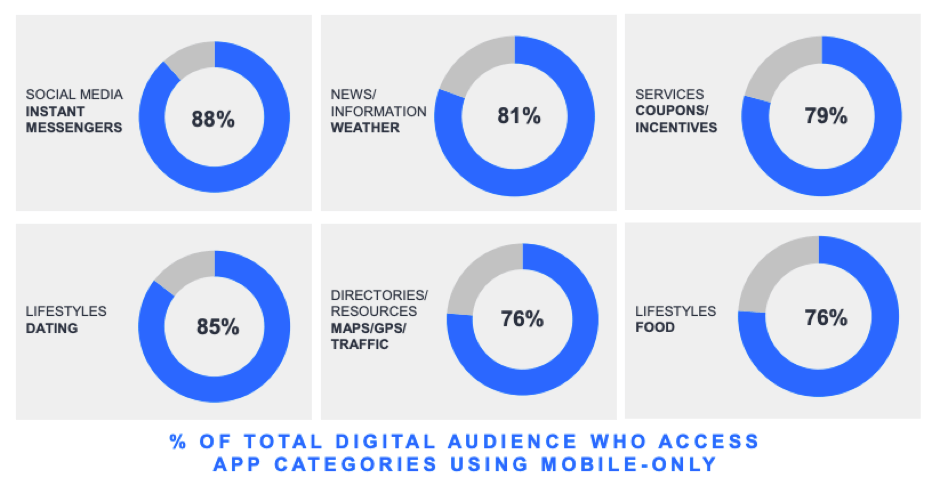
Mobile use is seen across generations
When looking at all generations there is strong use of mobile, showing that the trend is not just prevalent among younger generations. In the US, 63% of the total time spent on the internet across all generations is spent on smartphone apps.
Breaking this down into age groups, it increases to 72% for those aged between 18-24, which is the age group most would expect smartphone app usage to be high. However, the oldest generation, 65+, is also still spending a lot of time on mobile apps, with 44% of online time being spent on apps. The older generation is also the most likely to use apps on tablet devices, with 13% of their online time spent on these apps.
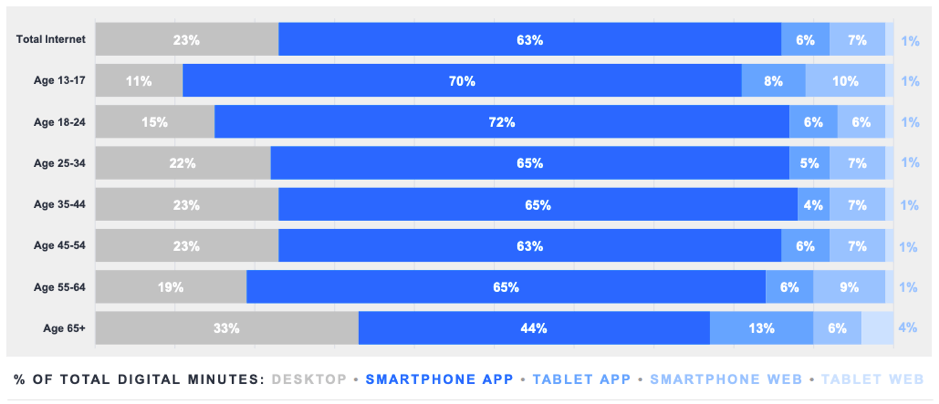
These figures show that apps should be aimed at and be accessible for all age groups in order to encourage use across the different generations. This could open up brands to larger audiences.
“Access
The focus of this Quick Win is recommendations on using Google Analytics data to assess and improve your mobile site’s marketing effectiveness.
Access the
Share of mobile time is reaching records in key categories
Breaking down online mobile use into different categories reveals that social media, games, and entertainment are now consumed mobile-first within the US. 94% of total minutes spent on online games is done so via mobile devices, showing that the trend is moving away from desktop and consoles in this area.
Looking at social media, 92% of online time is spent on mobile with 83% of the time spent on online entertainment is on mobile.
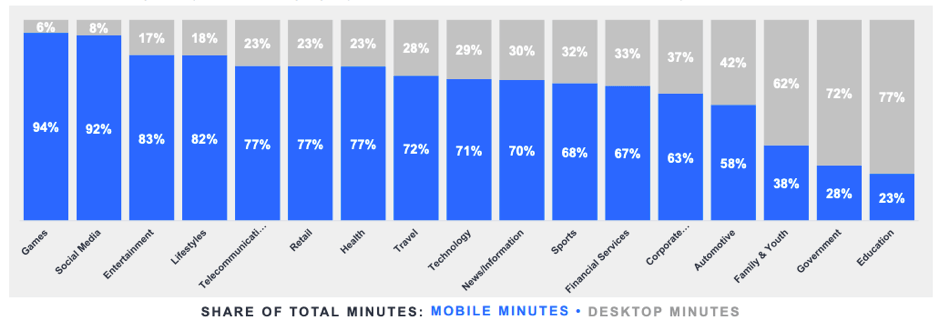
In fact, out of 17 different categories, people are spending well over 50% of their time exploring 14 of them via mobile, only family and youth, government, and education see a low amount of mobile minutes – 38%, 28%, and 23%, respectively. This essentially means that almost all brands, no matter which category they fall into, need to put mobile at the forefront of their digital marketing strategies.
Desktop still accounts for most e-commerce spending
Although people are now spending more of their time online on mobile devices, the majority of e-commerce spending is done via desktop. In Q2 of this year, desktop commerce accounted for 16.3% of consumer spending in the US while mobile just accounted for 6.5%.
However, the amount being spent on both desktops and mobile has seen an increase compared to Q2 2018. Combining desktop and mobile sees a year-on-year increase of around 16%.
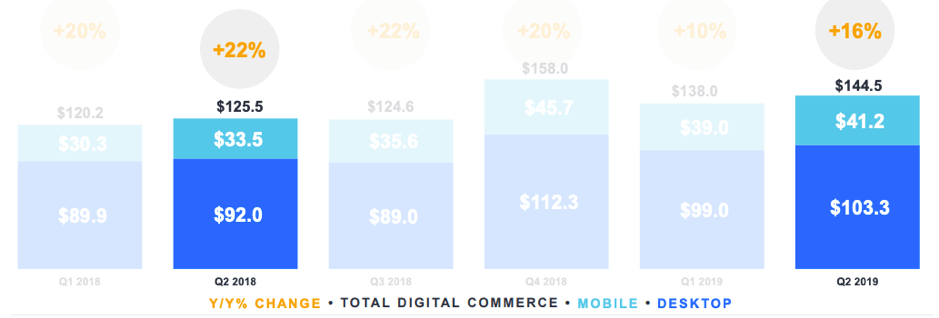
Spending on desktop rose from $92 billion in Q2 2018 to $103.3 billion in Q2 2019. Mobile also saw an increase, hitting $41.2 billion compared to $33.5 billion in the same period last year.
This shows that although people are happy to engage with retail brands on mobile – such as on social media or when browsing – they are still heading to desktop when it comes to making their purchases. Brands that make their products more shoppable on mobile could see more people converting at the research stage rather than heading to desktop to buy. This means making the most of features like in-app shopping on social media could be highly beneficial.
App downloads are declining
Despite the fact that most online mobile minutes are spent on apps, fewer people in the US are downloading apps than ever before. Only 32% of respondents to Comscore’s MobiLens Plus survey in August 2019 said that they had downloaded any number of apps. Of these, most had only downloaded one or two apps. This shows that people tend to stick to apps they know rather than try out new ones.
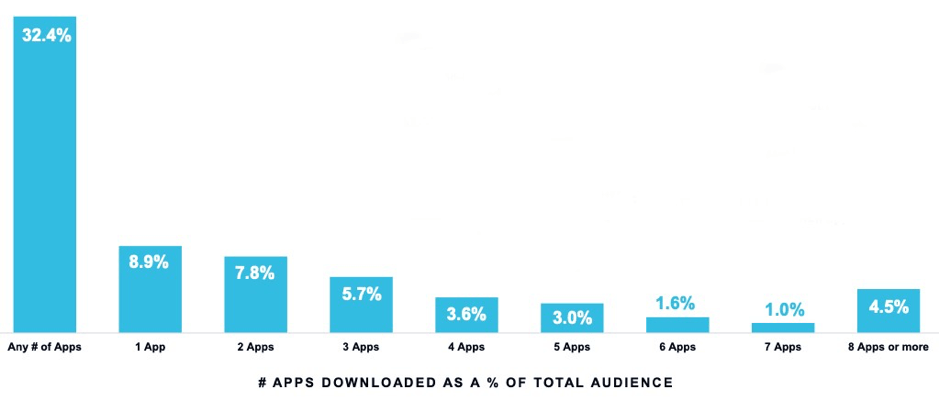
This lack of downloading certainly isn’t due to a shortage of options, as more apps are created and available now than ever before. However, the entrenched habits of users mean that app discovery is fairly low.
Brands who want to encourage app downloads should use the apps that their audience is currently using – such as social media – to push these downloads and aid discoverability. It is also a good idea to offer some form of reward for downloading and for continued use in order to encourage people to keep the apps and become regular users.
Final thoughts
More than ever, brands and marketing need to be mobile-first. There is no longer any leeway for a lack of mobile optimization, with audiences spending the majority of their time online on mobile devices.
While mobile apps are the go-to option for mobile browsing, people are sticking with what they know. This means that brands with apps need to encourage discovery by using the channels that their audiences are currently using. Advertising apps on social media could aid downloads while usability is key to retaining these app users.
E-commerce brands still benefit from desktop shoppers, but mobile shopping is happening more. Making it easy to go from browsing on mobile to making a purchase could improve customer journeys and better encourage in-the-moment conversion.
What all of these trends and figures show is that mobile is growing in importance and will continue to do so. All generations are now using mobile devices and apps to explore online, so brands need to look at their current strategies and see how they can better optimize them for an improved mobile experience.
Explore the findings in full by downloading Comscore's report.














